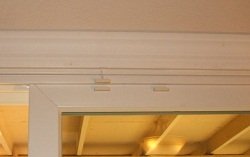- Home
- Compare Systems
- Cheap Systems
- Free Quotes
- DIY Systems
- Hardwired Systems
- Wireless Systems
- Smoke Detectors
- Medical Alarms
- Alarm Monitoring
- Cameras & Video
- Ademco
- ADT Security
- Brinks Security
- Broadview
- DSC Security
- FBI Alarms
- GE Security
- Honeywell
- Link Interactive
- Monitronics
- Moose
- Napco
- Protection 1
- Radionics
- Simplisafe
- Alarm Manuals
- Alarm System Parts
- Alarm Tools
- Troubleshooting
- FAQ
- Glossary
- Sitemap
- About Me
- Contact Me
Honeywell Switches
for Hardwired Alarm Systems
For home alarm purposes, Honeywell switches come in the same standard
“flavors” offered by most other manufacturers. These include surface
mount, recessed, and some specialty switches.
Alarm switches (also known as magnetic contacts, hardwire contacts, magnetic reed switches, or simply contacts), are the “worker bees” of all hardwired home security systems. They detect the open or closed position of doors and windows, and allow a home alarm panel to trigger an alarm or fault condition when appropriate.
Honeywell has thrown in a twist with a novel type of switch, which I’ll
get to in a minute. First, let’s look at the basic magnetic contacts and
how they’re used.
Surface Mount Honeywell Switches
For most sliding windows and doors, surface-mount Honeywell switches
will do the job. They often don’t require drilling into custom door or
window frames, so they’re easier to install than recessed contacts. The
switch should be located along one of the moving
portions of the door or window frame.
The Model 943WH Honeywell switches are mini magnetic contacts. They have a 1” gap, and their small size means they’ll fit where space is limited, such as along thin window frames.
For a slightly wider gap in a larger contact, check out the Model 949
Honeywell sensor. These switches are just over 2” long, and have a gap
distance of 1-1/4”.
In new construction, wires for Honeywell contacts can be brought out
through a hole drilled in the rough framing at each door and window
opening. After the doors and windows are installed, switches are
connected to the wiring and attached to the frames.
In an existing home, these steps are often done at the same time. Holes
are drilled through the door and window framing, and wires are fished to
each opening. Switches and magnets can then be installed as usual.
For swinging doors and windows, surface mount Honeywell contacts can be
placed almost anywhere except the hinge side. If
hinge-side mounting is desired or necessary, a recessed contact should
be used.
The minor downside to surface mount contacts is appearance. They can be an eyesore in some situations. For the average home, drapes, mini blinds, or other window coverings will mostly hide switches and magnets. Door switches are normally placed at the top or side of the frame, and tend to blend into the trim molding.
For more information about contacting doors, see Magnetic Door Switch Installation – Surface Mount Type.
To see how surface mount switches are used for windows, see these two pages:
Magnetic Reed Switches DIY Removal
Magnetic Reed Switch Re-Installation DIY
Recessed Contacts from Honeywell
When a cleaner look is desired, recessed Honeywell contacts can be flush-mounted directly into the frames of openings. Most standard magnets and contacts are made to fit either ¼” or 3/8” holes. Routing wires through the framing gives a better appearance, but it requires a bit more work.
For recessed installations using a 3/8” hole, Model 951WG
Miniature Honeywell sensors are a good choice. They have a gap distance
of 1-1/4”, the largest gap of any mini 3/8” contact.
For swinging doors and windows, position Honeywell sensors such as the
951WG either in the top or non-hinged side of the door frame. The magnet
can then be installed at the corresponding location on the door or
window.
Sliding openings can also use recessed Honeywell switches mounted in
either the top or side of the opening. A recessed magnet can then be
drilled into the movable frame, making for a very clean-looking
installation. Be very careful to avoid drilling into the glass!
More information on Installing Magnetic Door Switches – Recessed Type.
Honeywell Universal Contacts
One of the most unique Honeywell switches is the Model 7940 Universal switch. It combines surface-mount and recessed capabilities into a single device. The switch can be surface-mounted with screws or double-sided tape, just like standard switches. The 7940 can also be recess mounted by using the included adapter cap.
If you’re a DIYer, this may allow you to use a single switch type for every opening in your home. This means you can order enough Honeywell sensors to protect all the doors and windows, plus 2 or 3 more for future replacements or expansion.
If you’re a professional alarm installer, you now have another
tool in your bag of tricks. Use universal switches for a custom
security system or other special situation. They also come in handy as a
back up to your normal supply of dedicated surface mount and recessed
contacts.
To see the complete list of Honeywell switches along with technical
specification details, check out the Honeywell Magnetic Contact Guide.
For help installing an overhead door switch and magnet, see Garage Door Alarm Contacts - Tips & Techniques.
Learn more about Using Hardwire Contacts.
If you haven't done so already, get a few Free Home Security Systems Quotes from companies in your area.
This will give you a good idea of what it would cost to have a system installed, as well as how much you could save by doing it yourself.
Return to Home Security Systems Answers from Honeywell Switches
Return to Honeywell Security Systems from Honeywell Switches
Note: Feel free to print any of the articles on this site for personal, non-commercial use. Just look for this button:
If you found this website especially helpful, you might want to consider making a small donation. Since 2011, AzAlarmGuy has been providing free help and advice on home security systems to all of those in need.
Your gift, in any amount, will help me keep this website a free resource for anyone needing help with alarm system issues or questions.
Disclosure
I receive affiliate commissions from some of the companies and products I discuss. These commissions don't change the price that you pay.
Rest assured that this compensation does not influence my recommendations. I only endorse products and services that I truly believe to be an honest value for you, as a visitor to my site.
For more details, see my full disclaimer.






